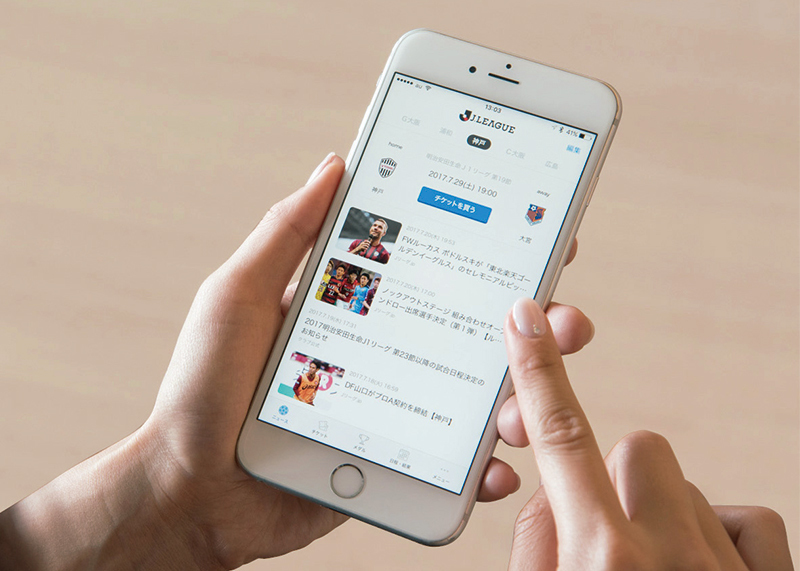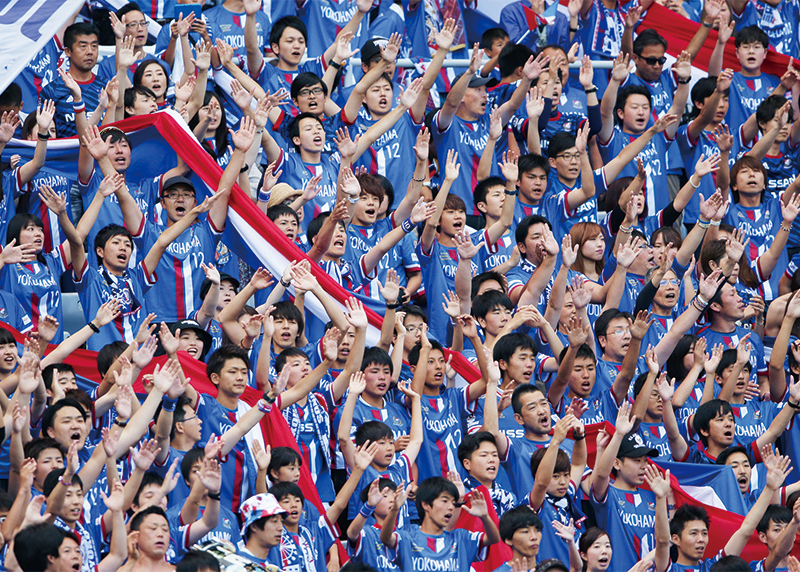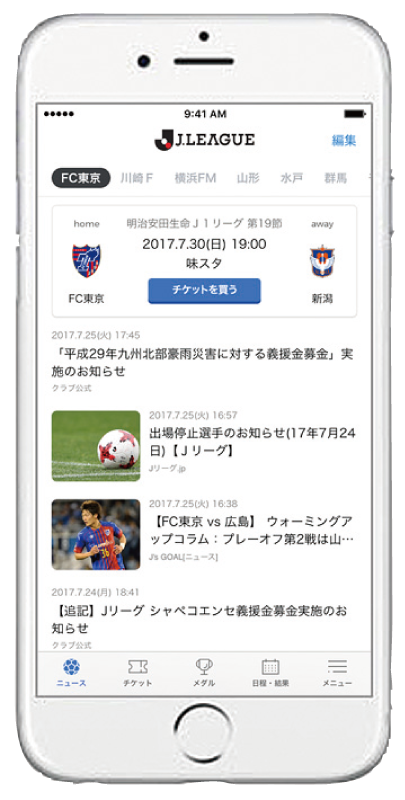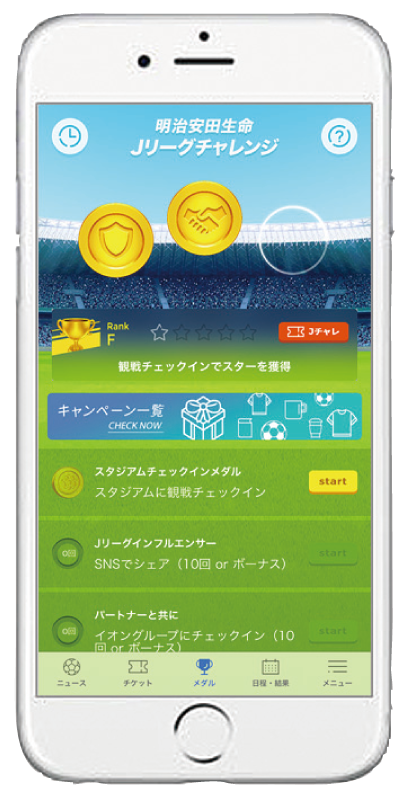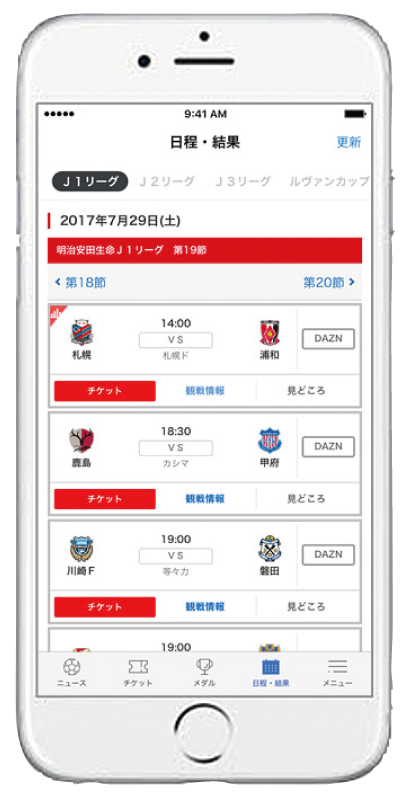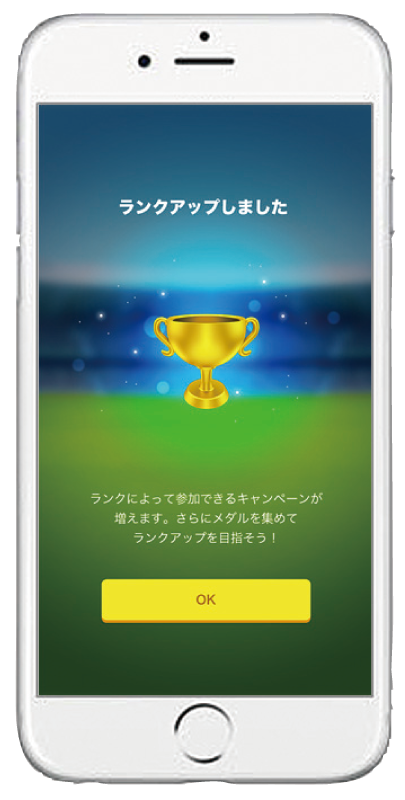Digital technology is revolutionizing sports. Both the live stadium experience and viewing on devices are evolving through digital innovation.
The J.LEAGUE is emblematic of this shift. It signed a contract with DAZN, the internet streaming service, starting this year. Furthermore, in August, it released the official J.LEAGUE app, " Club J.LEAGUE."
What are the goals behind this, and what future do they envision? J.LEAGUE Chairman Mitsuru Murai was invited to discuss this with Norifumi Watanabe of Dentsu Inc., producer of the "Club J.LEAGUE" project, and Yusuke Sakamoto of Dentsu Inc., who handled development direction.
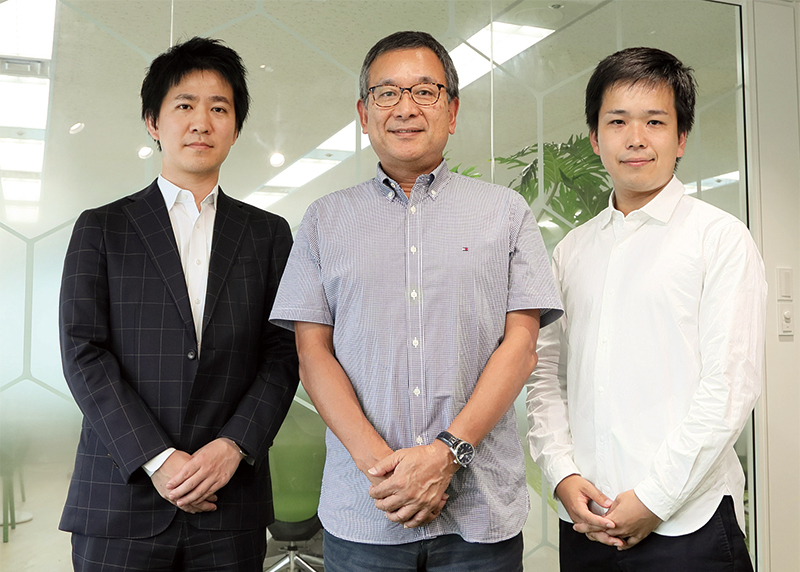
From left: Norifumi Watanabe (Dentsu Inc.), Mitsuru Murai (J.LEAGUE Chairman), Yusuke Sakamoto (Dentsu Inc.)
Digital viewing carries the greatest appeal of sports
Watanabe: Globally, we're seeing a major wave of Sports X Digital. Beyond the soaring costs of broadcasting rights for various sports, OTT services like Netflix and DAZN are rapidly entering sports broadcasting, radically transforming the viewing landscape. The J.League has also signed a contract with DAZN. Chairman Murai, how do you view the relationship between this global Sports X Digital wave and the shift towards OTT?
Murai: Certainly, looking at global sports, the integration with digital technology is advancing rapidly. However, regarding OTT for the J.League, it's based more on my own personal experience than on these overseas trends. I think everyone has had this experience: when you can't watch a sports game live and have to record it, you ask people around you, "Don't tell me the result; I'll watch it later at home." Or you carefully avoid seeing the results on the news on your way home. That experience made me realize the true value of sports lies in "sharing the drama as it unfolds." I want to feel like I'm fighting alongside the players, not just watching after knowing the outcome. That's why I've always believed the ideal for sports broadcasting is to be live, anytime, anywhere.
Watanabe: The level of excitement is completely different between watching live and watching after knowing the result, right?
Murai: Yes. OTT services let you watch anywhere, on any device. Plus, they offer robust catch-up streaming services.
Watanabe: Beyond OTT, the J.League is pursuing various digital strategies, right? Like promoting special Wi-Fi installations in stadiums, or digitizing player movements and play data during matches to provide feedback to each club. Also, during last year's J.League YBC Levain Cup final, we experimented with Canon's "Free Viewpoint Video Generation System," allowing viewers to freely watch replays from any 360-degree angle during the match.
Murai: We want to provide "what we truly want fans to see." For example, how fast professional soccer players sprint. How much difference there is between a pass starting at 8 meters per second versus 9 meters per second. We want to convey this by digitally representing such aspects, recreating the sense of being there.
Watanabe: One of the J.League's five key strategic priorities is "Promoting the Use of Digital Technology." Visualizing and experiencing the speed and skills of professional athletes is something fans will appreciate, and we're advancing this through a digital approach.
Murai: For fans and supporters watching, the ideal is to find themselves immersed in the game, experiencing it vicariously. That's the ultimate thrill of sports viewing. We want to create a situation where players, spectators, and viewers aren't separated, but are all participating in the match together. Digital technology is extremely effective for achieving this.

Mitsuru Murai
What the New App Aims for: "Maximizing the Stadium Experience"
Watanabe: This time, the J.LEAGUE and Dentsu Inc. developed the official app "Club J.LEAGUE." The concept is "maximizing the stadium experience." The most valuable moment is undoubtedly watching the game live; that excitement is unmatched. Under this concept, we spent about a year and a half planning, designing, and developing the app.
Sakamoto: When developing e-commerce sites or smartphone apps, we always keep this in mind: it's crucial to design the entire experience as a continuous journey. This starts with discovering the product and feeling excited about it, continues through the moment it arrives and you use it, and extends all the way to the point where you want to buy it again. The J.League is no different. We wanted to create a cycle that extends beyond just the time spent at the stadium. It starts from the moment you wake up on match day, includes lunch time, and even extends to casual conversations that spark the desire to watch a game. After actually going to see it, you have conversations on the way home that make you want to go again... We developed this app with the goal of creating that entire cycle.
Murai: Watching J.League matches, with 54 clubs scattered nationwide, is like a new kind of pilgrimage. Of course, the "memories" from each location are important, but equally significant is having a digital "record" of when, where, and which match you saw. And it's great that this is always accessible in a familiar app.
Watanabe: A major feature of this app is its mechanism where "fans invite new fans." To attract new people, the passion of existing fans is truly effective. We felt that being invited by passionate fans is more likely to "move new people" than running big ads. So, we created a system where checking in at a stadium earns you medals in the app. Collect three medals, and you can enter a lottery for free pair tickets to invite someone new.
Murai: For this project, I drew inspiration from ski resort visitors. Analyzing ski resort data shows that people who skied as children tend to return to the slopes when they become parents themselves. We at the J.League also wanted to create that cycle of inviting and being invited. If someone has been invited once, they might invite someone else in the future. However, if the enthusiasm from existing fans is too intense, newcomers might feel intimidated. We need a lighter hook, something that allows for casual invitations within everyday conversation. In that sense, I believe the mechanism of this app is heading in the right direction.
Watanabe: Furthermore, wouldn't the experience inside the stadium also become richer? In "Pokémon GO," there are scenes where multiple players defeat enemies together, and overseas, players often start talking to each other during those moments. In the J.League too, when fans come to the stadium, if the app has hooks beyond just the match content, it would naturally foster conversation and interaction among fans, right?
Murai: Exchanging data with the person next to you via the app, or looking at information together within the app and talking about it. If that kind of situation arises, the person sitting next to you is no longer a stranger. Conversations might start like, "If we go under that gate, we can get a bonus in the app." By incorporating various features into the app, it can lead to live-style encounters.
Watanabe: I believe enhancing the live experience through digital means is also key to maximizing the stadium experience.
Murai: The key is light sharing around a common interest. If you try to gather people around an overly specific commonality, it creates friction with those who don't fit that category. If you can share light, everyday content, encounters at the stadium will happen, and more people will invite each other or be invited.
Watanabe: If more people watch games that way, the atmosphere gets even more exciting, right?
Murai: Sports are live entertainment. Watching a simultaneous drama with an unknown outcome together holds immense value. Thinking about it that way, kabuki and opera are also live entertainment and might share common ground with sports. Inviting more people through such shared experiences, enjoying the moment with strangers on-site, and feeling the intensity of life together should make society better. We want to support that through digital technology.
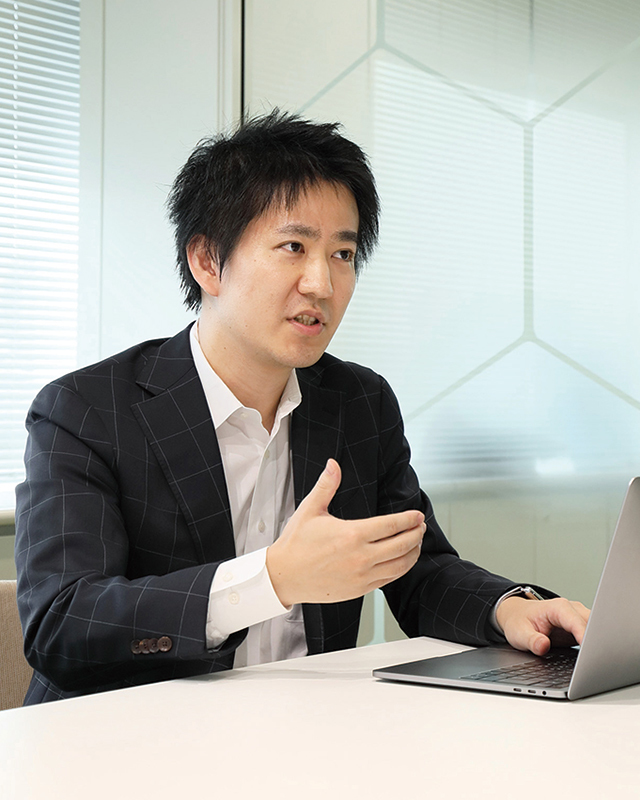
Norifumi Watanabe
How the J.LEAGUE App Solves Partner Companies' Challenges
Watanabe: A major feature of Club J.LEAGUE is our collaboration with J.League partner companies like Meiji Yasuda Life and Aeon. We co-design initiatives from the planning stage and share the various data accumulated in the app, creating a framework that simultaneously addresses each partner company's challenges.
Sakamoto: Many companies are now focusing on digital marketing. They believe that by understanding diverse data, they can increase loyalty among existing customers and also acquire new ones. However, there are two major hurdles concerning "service and data." One is "how many people will use the service enough to acquire the data." The other is "can we consistently feed that data back into the service to enhance customer satisfaction?" This app was developed in cooperation with partner companies to overcome these two hurdles.
Murai: What was particularly rewarding this time was developing the app together with our partner companies. Organizers and partner companies often end up in a transactional relationship. Being able to collaborate and jointly consider how to invigorate the league and the city was significant. I feel this could serve as a future model for partnerships in the sports world.
Sakamoto: The league and partners collaborate to enhance the league's value and provide fans with great experiences. The data gained from this is then leveraged by partner companies for their own businesses. I believe there are still very few examples where such a cycle with partners has been successfully created.
Watanabe: Another major point is that, starting with Meiji Yasuda Life Insurance, we can now reach audiences beyond the J.League's own reach by leveraging the power of our partner companies.
Murai: Another key design point this time was centralizing the app as a league-wide platform. It's difficult for smaller clubs to develop apps from scratch on their own. By having the league build the core platform app and then tuning it, clubs avoid duplicate investment. Clubs and the league complement each other.
Watanabe: The J.League centrally builds the foundational app while allowing each club to independently innovate their own fan engagement points. That balance is also a defining feature.

Yusuke Sakamoto
For the next 25 years, to contribute to each region through soccer
Watanabe: How far can the J.League expand the stadium experience going forward? Perhaps in five years, fans could experience stadium immersion through VR broadcasts, or apps like this one could become smart passes serving as membership cards. Is that a possibility?
Murai: Regarding VR, we already streamed the July 22nd Kashima Antlers vs. Sevilla match, and I believe we can eventually offer it as a service. Other services will likely advance rapidly too. After all, OTT match broadcasts themselves were unimaginable just a year ago. I believe we can evolve at an incredible speed.
Sakamoto: While the stadium experience during matches becomes more cutting-edge, could digital technology also drive contributions to and revitalization of local communities?
Murai: That's definitely something we want to pursue. Take education, for example. Beyond schools, sports can teach many things – like team responsibility or the value of perseverance. We could use apps to have players speak directly to local children. There are various social challenges, but the vision of partners like the J.League and Meiji Yasuda Life is to tackle these issues through soccer and contribute to local communities. So, starting from the stadium area, we want to help solve the challenges each region faces. Using digital technology, I believe we can tailor various approaches to each specific region.
Watanabe: The J.League is promoting smart stadiums, and we're also considering how to utilize the data accumulated there for local communities.
Murai: Yes. We would be delighted if returning this accumulated digital data to society could foster open innovation. Next year marks the J.League's 25th anniversary. We started with the goal of community integration and, over this quarter-century, expanded our base to 54 clubs. For the next quarter-century, we want to demonstrate how to improve society through the clubs' hometown activities. Digital technology is indispensable for achieving this.
The official J.League app enhances the stadium experience. Beyond features like viewing your favorite club's news, purchasing match tickets and merchandise, and receiving match updates via push notifications, it includes the "Meiji Yasuda Life J.League Challenge" loyalty program—where you earn more benefits the more matches you attend—and the "Stadium Exclusive Video Feature," allowing free DAZN streaming when connected to stadium Wi-Fi.
Collect medals earned by attending matches and completing various missions. Winning a lottery draw grants you pair tickets to invite friends who haven't yet experienced a J.League match.
Furthermore, depending on your rank, you can participate in campaigns run by the J.League, individual clubs, and partner companies. The goal is to create connections not only between fans and supporters themselves, but also with the league, clubs, and partners, aiming to expand the J.League's fan and supporter base.









